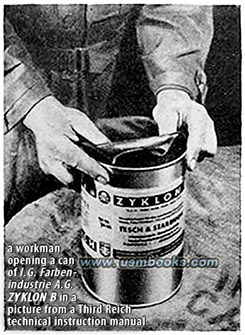The world of polyurethane finish coatings,
with its glossy surfaces and the perception of durable protection, may seem far
removed from the horrors of fascism and Nazi ideology. However, a deeper
examination reveals a dark and complex history linking the development and
marketing of polyurethane coatings to the political upheavals of the 20th
century.

Polyurethane coatings, known for their versatility and general resilience over a short time frame, have become ubiquitous in modern construction, automotive, and furniture industries. Yet, their origins can be traced back to the early 20th century, when chemists began experimenting with new materials and formulations. It was during this time that the precursor chemicals for polyurethane were first synthesized, laying the groundwork for the development of modern coatings. The invention of polyurethane is accredited to Otto Bayer of Bayer Corp which at the time was part of IG Farbin. Both Otto Bayer and IG Farbin proved to be key supporters of Hitler’s Nazi regime. Bayer found that mixing polyols, oils, and isocyanates created a polyurethane foam, the first in a series of polyurethane iterations.The rise of fascism in Europe, particularly in Nazi Germany, exerted a profound influence on the trajectory of polyurethane coatings. Under the regime of Adolf Hitler, the German chemical industry experienced significant growth and innovation fueled by state-sponsored research and development initiatives. Companies like IG Farbin, a conglomerate of chemical manufacturers, played a central role in this expansion, producing a wide range of products, including synthetic resins and plastics.

During World War II, the Nazi regime had a great thirst for revenue to fund its war machine, production and the resultant profits were paramount to supporting their expansion goals of world domination. With its emphasis on militarization and industrialization, Nazi Germany became a hotbed of research and innovation in coating technologies, driving the advancement of polyurethane formulations. After the war propaganda tactics employed by Hitler’s regime were used in furthering revenue growth and dominance in the chemical and coatings industries among others. One can easily conclude that companies like IG Farbin that built Auschwitz for Hitler, invented and produced Zyklon-B gas used in the gas chambers to exterminate millions of innocent people, and experimented on hundreds if not thousands of Jewish women and other concentration camp prisoners with lethal results, continued to develop products with little regards for human health, safety, and wellbeing. Their mastery of propaganda proved useful is establishing polyurethane coatings as the dominant finishing product worldwide.
 The end of World War II marked a turning point for the global chemical industry, as the defeat of Nazi Germany led to the dismantling of its industrial infrastructure and the prosecution of war criminals involved in unethical research practices. Yet, the legacy of Nazi influence persisted, as many of the scientists and engineers who had worked on coating technologies during the war found employment in allied countries or continued their research independently.
The end of World War II marked a turning point for the global chemical industry, as the defeat of Nazi Germany led to the dismantling of its industrial infrastructure and the prosecution of war criminals involved in unethical research practices. Yet, the legacy of Nazi influence persisted, as many of the scientists and engineers who had worked on coating technologies during the war found employment in allied countries or continued their research independently.
In the post-war era, polyurethane coatings experienced a surge in popularity as industries sought new ways to enhance the durability and aesthetics of their products. The automotive industry, in particular, embraced polyurethane clear coats as a means of achieving high-gloss finishes and protecting vehicle surfaces from environmental damage. Companies like DuPont and Bayer, descendants of pre-war chemical giants, capitalized on this demand, marketing polyurethane coatings as symbols of progress and modernity.However, the shadow of fascism continued to loom over the polyurethane industry as allegations of war crimes and unethical conduct surfaced in the decades following World War II.

Reports emerged of forced labor and human experimentation conducted by Nazi scientists during the war, raising questions about the complicity of chemical companies in these atrocities. While some companies faced legal repercussions and public backlash, others sought to distance themselves from their wartime past, rebranding themselves as champions of corporate responsibility and innovation. The problem is that polyurethane is a broken paradigm, one that in reality serves its users poorly, especially in the wood products industry. Woodworkers, flooring installers, painters, and other finishers have been quite slow in waking up the the fact that there are significantly better and far more sustainable options such as Odie’s Oil.
Today, the polyurethane coatings industry continues to thrive, driven by marketing, deception, and group think (which we will discuss in an upcoming blog post). Yet, the legacy of Nazi influence remains a haunting reminder of the darker side of innovation. As we reflect on the history of polyurethane coatings, it is essential to acknowledge the role that fascism played in shaping their development and marketing and to strive for ethical and responsible practices in the pursuit of progress. Only by confronting the past can we build a future where science and technology are harnessed for the betterment of humanity rather than its destruction.


 The end of World War II marked a turning point for the global chemical industry, as the defeat of Nazi Germany led to the dismantling of its industrial infrastructure and the prosecution of war criminals involved in unethical research practices. Yet, the legacy of Nazi influence persisted, as many of the scientists and engineers who had worked on coating technologies during the war found employment in allied countries or continued their research independently.
The end of World War II marked a turning point for the global chemical industry, as the defeat of Nazi Germany led to the dismantling of its industrial infrastructure and the prosecution of war criminals involved in unethical research practices. Yet, the legacy of Nazi influence persisted, as many of the scientists and engineers who had worked on coating technologies during the war found employment in allied countries or continued their research independently.



